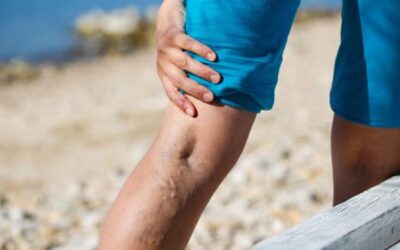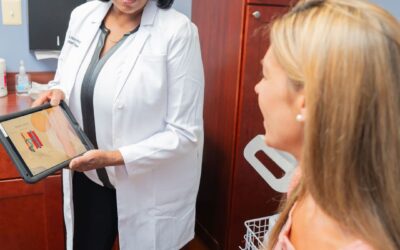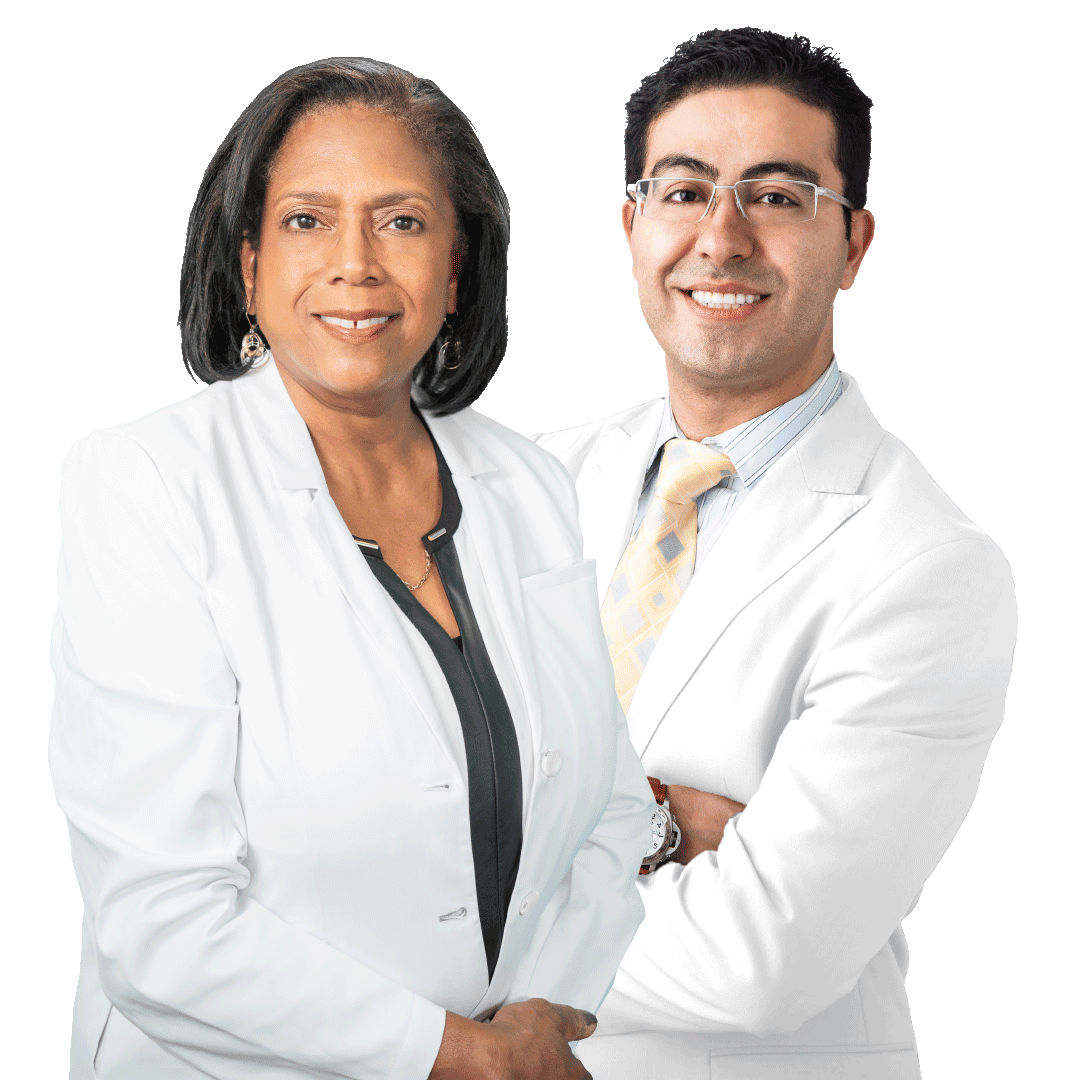Top Maryland Vein Doctors
Vein Treatment: A Natural Approach
The pursuit of natural remedies to address vein problems, such as varicose veins and spider veins, has gained popularity in recent years. While there’s no denying the appeal of harnessing the power of nature to alleviate discomfort and improve vein health, it’s essential to separate fact from fiction. In this article, we dispel the myths and misconceptions surrounding supposed natural remedies for veins, shedding light on what works and what doesn’t.
The Allure of Natural Remedies
Natural remedies have an inherent allure. They evoke images of holistic healing, relying on the wisdom of centuries-old practices and the purity of Mother Nature’s bounty. Many individuals are drawn to the idea of treating their vein issues without the need for medical interventions, envisioning simple, accessible solutions that promise relief. Dubious online sources often peddle remedies like apple cider vinegar and witch hazel to address vein problems.
At best, many of these natural remedies are simply ineffective, and at worst, they can be actively harmful and prevent individuals from seeking medically-necessary vein treatments. In this article, we’ll reveal some of the most untested or harmful solutions peddled as natural remedies for spider veins and varicose veins. We’ll also highlight natural solutions and lifestyle changes that can truly improve vascular health, and finally describe minimally invasive vein treatments that truly address the root causes of vein problems.
First, Let’s Understand Common Vein Problems
Spider Veins
Spider veins, also known as telangiectasia, are small, thin veins that appear near the surface of the skin. They often resemble a spider’s web or fine tree branches, hence the name. These veins are typically red, blue, or purple in color and can occur on various parts of the body, but are most commonly found on the legs and face. While spider veins are often harmless and not associated with significant discomfort, they can be symptomatic of a dangerous underlying condition known as chronic venous insufficiency.
Varicose Veins
Varicose veins are enlarged, swollen veins that typically occur in the legs and feet. They develop when the valves within the veins weaken or fail, causing blood to pool and the veins to become twisted and bulging. Varicose veins often appear blue or purple and can be painful and uncomfortable. Common symptoms include aching, throbbing, and a feeling of heaviness in the legs. Varicose veins necessitate medical treatment because they can be dangerous, and they’re almost always caused by chronic venous insufficiency.
Chronic Venous Insufficiency (CVI)
Healthy veins play a crucial role in our circulatory system. They are responsible for carrying deoxygenated blood from the body’s tissues back to the heart. To perform this function effectively, veins have one-way valves that prevent the backward flow of blood. When the muscles surrounding the veins contract, they push the blood towards the heart, and the vein valves resist the force of gravity, preventing blood from flowing backward.
Chronic venous insufficiency occurs when these valves within the veins become damaged or weakened, leading to an inadequate return of blood to the heart. As a result, gravity forces blood to flow backward and pool in the legs, causing pressure to build up within the veins. This increased pressure can lead to the development of varicose veins and spider veins. Additionally, CVI can result in leg swelling, leg pain, skin changes, leg ulcers, and many other problems, making it the root cause of many vein-related issues.
Why Most Natural Home Remedies Are Ineffective
Most vein issues, including varicose veins and spider veins, are primarily caused by damaged or weakened vein valves. These tiny, intricate structures within the veins play a crucial role in maintaining proper blood flow by preventing backward flow or reflux. When these valves fail, blood pools in the veins, causing them to swell and become visible. When natural home remedies seem to work, they may offer symptom relief, such as reducing pain or swelling, but they cannot repair or restore damaged vein valves.
Popular remedies like witch hazel, apple cider vinegar, or herbal supplements may provide temporary relief by reducing inflammation or improving circulation, but they do not fix the dysfunctional veins. Furthermore, since venous insufficiency is a chronic condition, the symptoms gradually worsen over time. To effectively treat vein issues, it’s essential to consult with a medical professional and consider minimally invasive treatments that target the underlying structural problems of the veins and reroute blood flow into healthier leg veins.

We know health insurance is confusing so we will help you check if you’re covered:
FREE Coverage Checker:
Examples of harmful, ineffective, or debunked natural remedies:
- Drinking excessive amounts of apple cider vinegar
- Using witch hazel and other herbal ingredients
- Using garlic or onion poultices on the veins
- Applying excessive pressure or tight wraps on the affected area
- Ingesting unusual mixtures of herbs and spices without professional guidance
- Relying solely on dietary supplements to treat vein issues
- Using tobacco leaves or tobacco-based products as a remedy
- Pursuing any treatment or solution without consulting vein doctors
Dangers of pursuing home remedies without vein doctors:
- Delayed diagnosis and treatment of underlying vein conditions
- Potential worsening of vein problems due to ineffective remedies
- Risk of allergies or adverse reactions to unregulated natural substances
- False sense of security, leading to neglect of necessary medical interventions
- Inadequate management of pain and discomfort associated with vein issues
- Possible exacerbation of symptoms or complications
- Misallocation of time and resources on unproven remedies
- Missed opportunities for early intervention, which can be crucial in managing vein problems
- Failure to address root causes, allowing vein issues to progress
- Prolonged suffering and diminished quality of life due to untreated vein conditions
Truly Effective Conservative Vein Treatments
Some conservative vein treatments, including lifestyle changes, wearing compression stockings, and certain dietary modifications, can indeed play a valuable role in managing the symptoms of vein conditions, particularly after consultation with vein doctors. Conservative vein treatments often focus on improving blood circulation and reducing the pressure on leg veins. These measures essentially push some of the accumulated blood from the leg veins to the heart, offering temporary relief from discomfort and cosmetic concerns.
However, it’s crucial to understand that conservative treatments do not address the root cause of most vein problems, which is chronic venous insufficiency (CVI) resulting from damaged vein valves. These treatments cannot repair or restore these valves, and as a result, they provide only temporary relief. To effectively treat vein conditions and prevent their recurrence, it’s essential to consult vein specialists who can diagnose the underlying issues and recommend minimally invasive treatments that address the structural root cause of vein problems.
Examples of lifestyle changes and conservative vein treatments:
- Regular exercise to improve blood circulation and muscle tone
- Wearing compression stockings to support vein function and reduce swelling
- Elevating the legs above heart level to encourage blood flow back to the heart
- Dietary modifications that promote vascular health, including a high-fiber, low-sodium diet
- Maintaining a healthy weight to reduce pressure on leg veins
- Avoiding prolonged periods of sitting or standing to prevent blood from pooling
- Gentle massage techniques to stimulate blood flow
Benefits of conservative vein treatments with vein doctors:
- Temporary relief from symptoms like pain, swelling, and discomfort
- Improved circulation and reduced pressure on leg veins
- Minimized risk of complications associated with vein issues
- Enhanced overall vascular health and blood flow
- Potential prevention of new vein problems
- Cost-effective and non-invasive options
- Complementary support for minimally invasive vein treatments
- Reduction of cosmetic concerns related to varicose and spider veins
- Safe and accessible methods for improving vein function and comfort
- Professional assessment of the suitability of conservative treatments
- Tailored recommendations based on your medical history and individual needs

Visit Our Maryland Vein Treatment Center
Minimally Invasive Treatments: The Gold Standard
While conservative treatments offer valuable symptom relief and support for vein health, they often fall short in addressing the root cause of most vein problems: chronic venous insufficiency. For those seeking long-term and comprehensive solutions, minimally invasive treatments stand as the gold standard in the field of vein care. These procedures not only alleviate symptoms but also directly target and correct the underlying structural issues within the veins. Minimally invasive vein treatments offered by board-certified vein doctors include sclerotherapy, endovenous laser ablation (EVLA), radiofrequency ablation, VenaSeal, and phlebectomy.
Minimally invasive treatments are highly effective in closing off or removing problematic veins, thus allowing the accumulated blood to reroute into healthier leg veins. Sclerotherapy and ambulatory phlebectomy can also address the visible spider veins and varicose veins. As such, minimally invasive vein treatments offer symptomatic and cosmetic relief while addressing the root cause of your vein problems. They are performed with minimal discomfort, typically require no hospitalization, and have shorter recovery times compared to traditional surgical methods.
Examples of minimally invasive vein treatments:
- Sclerotherapy
- Endovenous laser ablation (EVLA)
- Radiofrequency ablation (RFA)
- VenaSeal
- ClariVein
- Ambulatory phlebectomy
Benefits of minimally invasive vein treatments:
- Highly effective in targeting and correcting underlying vein issues
- Minimized discomfort during and after the procedures
- Shorter recovery times compared to traditional surgical methods
- Outpatient treatments with no hospitalization required
- Rapid return to normal activities and daily life
- Improved blood flow and relief from vein-related symptoms
- Minimal scarring and cosmetic impact
- Lower risk of complications
- Personalized treatment plans tailored to individual needs
- Performed by experienced board-certified vein doctors
The Maryland Vein Treatment Difference
At Maryland Vein Treatment, we believe in a holistic, comprehensive approach to vein care. While natural remedies and lifestyle changes can be beneficial under the guidance of vein doctors, they are most effective when combined with minimally invasive medical treatments. Our board-certified vein doctors perform a thorough diagnosis using duplex ultrasound to determine the root cause of your vein issues. This enables us to create a personalized treatment plan that addresses your unique needs.
If you’re seeking vein treatment in the Maryland area, Maryland Vein Treatment is conveniently located at 10215 Fernwood Rd, Suite 301, Bethesda, outside of Washington, DC. Don’t let varicose veins or spider veins hold you back—schedule your consultation today.



